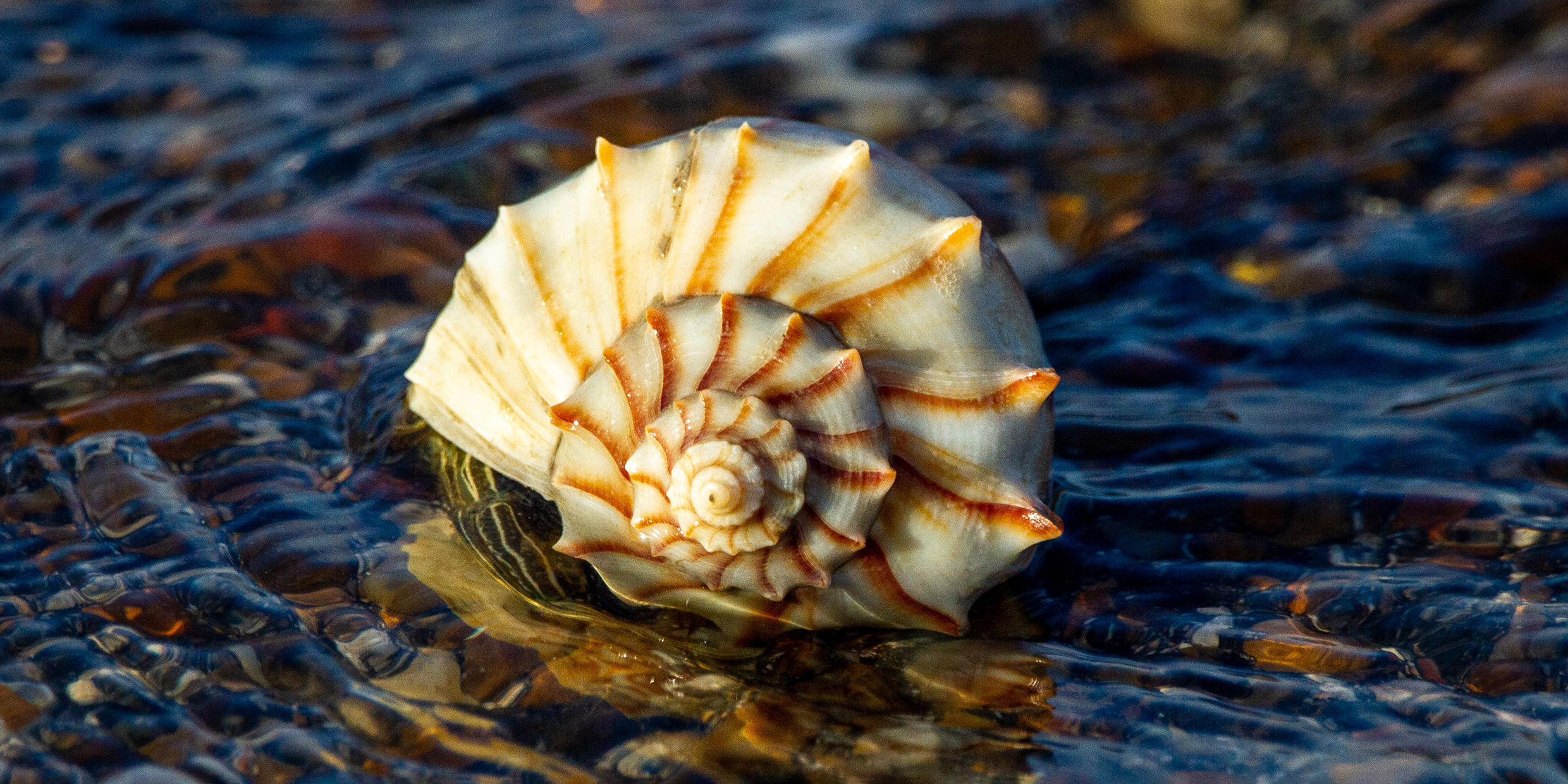Originally published 3 April 2001
Last week I visited the Queen Conch, a large and common shellfish of the Caribbean. Let’s give that subject another whirl.
Whorl, rather.
Like many snails of land and sea, the conch secretes an ever-enlarging cone-shaped shell as it grows. The shell has a whorl, and the whorl is almost always right-handed; that is, it curls clockwise when viewed from the point of the spire. Rarely, a conch has a left-handed whorl. Such oddities are called “sports,” and they are valued as collector’s items.
Only a very few species of snail — the Perverse Whelk, for instance — commonly curl in a left-handed fashion. The handedness of the whorl is genetically determined, but there would appear to be no other reason why a snail’s shell should curl one way rather than the other. Both sorts of snails exist in nature, mirror images of one another.
Honeysuckle takes on a left-handed twist as it grows; other vines spiral to the right. Most vertebrates, including humans, are bilaterally symmetric, externally at least. Of course, inside it’s a different story. Our hearts are off-center and have a twist. So do our intestines.
The handedness of a vertebrate’s internal organs is constant for a given species. Like the “sport” conch, a mirror image arrangement of internal anatomy sometimes happens, even for humans. Normal organ placement is called situs solitus; the mirror image is called situs inversus. Generally, an individual with all organs reversed suffers no ill effects, but partial reversals can be damaging.
In recent years, scientists have been figuring out the subtle genetic signals that cause a developing embryo to twist one way rather than the other. A gene called PITX2 seems to play a crucial role in the internal handedness of vertebrates.
The twisted fabric of life goes much deeper than spiral shells or lopsided hearts. Even the very molecules of life have a handedness, or chirality. Proteins and DNA have a helical twist, which is constant across all domains of life. More basic molecules, such as sugars and amino acids (of which proteins are made), come in both right- and left-handed forms, but all life on Earth uses only right- handed sugars (dextrose) and left-handed amino acids.
There would appear to be no reason in principle why creatures made of right-handed amino acids or left-handed sugars couldn’t exist. The exclusive use of one chiral form of molecules rather than the other is evidence for the relatedness of all terrestrial life by common descent, and the conservation of handedness over time.
Why did life adopt one form of handedness rather than the other? Scientists have been pondering the question for decades, without success.
One theory suggests that the handedness of organic molecules had its origin in radiation from a supernova that bathed the Earth as life had its beginning. All supernova radiation is polarized; that is, the light is emitted in a corkscrew fashion, either to the right or left. Research has shown that polarized radiation can cause chemical reactions to favor one chiral form of molecule rather than its mirror-image twin.
If this is true, then the handedness of life had its origin in an exploding star.
Other scientists have proposed the weak nuclear force as the source of nature’s handedness. This is the force that governs the radioactive decay of a neutron in an atomic nucleus into a proton and an electron. It is the only fundamental force of nature (gravity, electromagnetism, and the strong nuclear force are the others) with a built-in twist; the electron always comes out with a left-handed spin.
Experiments confirm that left-spinning electrons can weakly bias chemical reactions toward one chiral form or another. If this is the source of the handedness of biomolecules, then the twist of our visceral organs may be connected to an asymmetry at the heart of matter.
But the handedness of life may have a much simpler source. Stirring of chemical solutions can cause reactions to go one way rather than another. Perhaps life got started in a “warm little pond” that was stirred by wind or currents. Maybe in some complicated way the twists of life are related to the spin of the planet itself.
A conch shell sits on my desk as I write. Its corkscrew spire poses a big, big question, and so far scientists can only guess at the answer. The fact that I’m typing primarily with my right hand poses the same question: Why are living things asymmetric?
Whatever the explanation turns out to be, the lesson is clear: It’s all part of a piece. Conch shells, honeysuckle vines, the curl of the human heart, exploding stars, whirling planets, decaying neutrons, biochemistry: no part of this twisted, beautiful world can be abstracted from any other.



